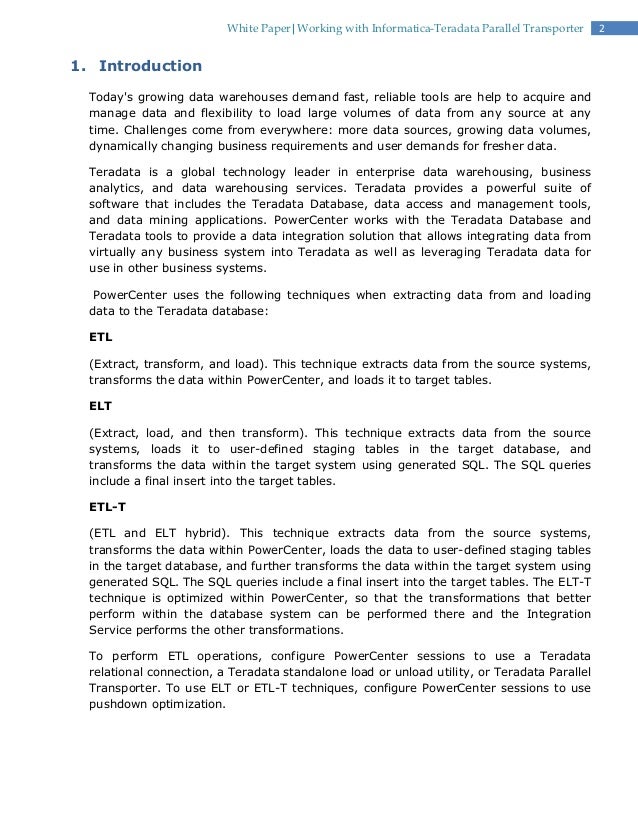- Teradata Fastload Reference Manual Download
- Teradata Fastload Reference Manual Free
- Fastload Teradata Example
- Reference Manual Definition
The article contains comparison and main features of the data loading tools provided by Teradata. The tutorial illustrates main features of Teradata Multiload , FastLoad and TPump (Parallel Data Pump) and provides sample real-life uses of those tools.
Scroll down for the sample scripts which illustrate different ways to load a sample fixed-length extract into a Teradata database using FastLoad, MultiLoad and Parallel Data Pump (TPump).
15.10 - Teradata FastLoad Utility - FastLoad Teradata FastLoad Reference prodname FastLoad vrmrelease 15.10 category Programming Reference featnum B035-2411-035K.
Teradata Fast Load
- FastLoad utility is used to load data into empty tables. Since it does not use transient journals, data can be loaded quickly. It doesn't load duplicate rows even if the target table is a MULTISET table. Target table should not have secondary index, join index and foreign key reference. How FastLoad Works. FastLoad is executed in.
- Teradata FastLoad is a command line utility that can be used to load large amount of data into an empty table on Teradata database. The performance will be greater than line by line or batch processing mechanism. This article provides example of using FastLoad to load CSV file into Teradata database.
Teradata Multi Load

Teradata Parallel Data Pump (TPump)
The following script attached below will load a sample fixed-length columns extract into a Teradata database using FastLoad.
Use the following command to run load the ggclients.fastload file using Teradata FastLoad script:
Contents of a ggclients.fastload script:
The following script attached below will load a sample fixed-length columns extract into a Teradata database using MultiLoad.
Use the following command to run load the ggclients.mload file using Teradata FastLoad script:
Contents of a ggclients.mload mload script:
The sample script attached below loads a sample fixed-length columns extract into a Teradata database using Parallel Data Pump - Teradata TPump.
Contents of a ggclients.tpump script:
Teradata FastLoad is a command line utility that can be used to load large amount of data into an empty table on Teradata database. The performance will be greater than line by line or batch processing mechanism.
This article provides example of using FastLoad to load CSV file into Teradata database.
Example CSV file
Create a sample CSV file named test_fastload.csv with the following content:

Create FastLoad job script
Create a FastLoad job script that performs the following actions:
- Logon to the database;
- Drop target table;
- Create target table;
- Load data into the target table;
To implement this, create a FastLoad script file named load-csv.fastload. The content looks like the following:
To run FastLoad job, the two error tables should not exist and also the target table should be empty.
The above script recreate the target table each time thus the logon user needs to have CREATE TABLE permission on the target database. It also sets the input format as variable text file with delimiter as ','.
Run FastLoad script
Command fastload can be used to run the script file:
The output looks like the following:

Verify the data
Run the following SQL statement to verify the result:
Teradata Fastload Reference Manual Download
The result set looks like this:
Interactive mode

Teradata Fastload Reference Manual Free
We can also run fastload using interactive mode. To do this, type fastload command in Command Prompt:

And then input each command with prefix '.'.
Fastload Teradata Example
For example, use '.LOGON …' to logon to the database:
References
Reference Manual Definition
Teradata FastLoad Reference